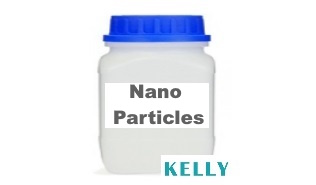
Spherical silicon dioxide (Silica), the particle size is nano/micron scale;
Titanium dioxide(Titania) , the particle size is nano/submicron scale;
Spherical Aluminium oxide(Alumina), the particle size is nano/submicron/micron scale;
Hollow Silica , the particle size is nano/submicron;
High-purity Magnisium oxide, the particle size is nano-scale;
High-purity Copper oxide, the particle size is nano-scale;
High-purity Yttrium oxide, the particle size is nano-scale;
There are also other surface treated products, welcome to leave a message or call for specifications.
Excellent chemical stability, excellent insulation, high thermal conductivity, low ion content, low equipment wear, small particle size (0.2-0.4um); Main applications - thermally conductive gaskets, thermally conductive adhesives, thermally conductive engineering plastics, thermally conductive ceramic substrates , ceramic membrane materials, abrasives.
Small and uniform particle size(0.2-0.4um), high hardness and wear resistance, high temperature resistance and chemical stability, and low moisture content. ; Main applications - positive electrode materials, diaphragm materials, electronic materials, coating materials, etc.
The primary particle size is 30nm,disperse in butyl acetate, applications: anti-sticking, scratch-resistant and impact-resistant, insulation
High heat insulation, low Dk, low reflection, low scattering, low refractive index, high frictional resistance and other characteristics; primary particle size is 1.5um,MTMS surface treatment, suitable for epoxy resin.
High heat insulation, low Dk, low reflection, low scattering, low refractive index, high frictional resistance and other characteristics; primary particle size is 700nm
High thermal insulation, low dielectric constant Low Dk, and anti-reflection films. The primary particle size is 60-70nm, pH=3-4, and it can be used for surface modification and dispersed in different solvents.
1) Low coefficient of thermal expansion (CTE), which can reduce the CTE of the material and prevent material cracking 2) Low dielectric loss (Low Df) 3) Anti-warping, high filling content 4) Low radiation 6) Spherical material has better fluidity and filling 7) The average particle size is 50nm
1) Low coefficient of thermal expansion (CTE), which can reduce the CTE of the material and prevent material cracking 2) Low dielectric loss (Low Df) 3) Anti-warping, high filling content 4) Low radiation 6) Spherical material has better fluidity and filling 7) The average particle size is 200nm
1) Low coefficient of thermal expansion (CTE), which can reduce the CTE of the material and prevent material cracking 2) Low dielectric loss (Low Df) 3) Anti-warping, high filling content 4) Low radiation 6) Spherical material has better fluidity and filling 7) The average particle size is 500nm
1) High purity 2) High whiteness 3) Uniform and extremely fine particle size, average particle size is 300nm 4) Surface treatment, excellent water dispersibility 5) Crystal form is Anatase
1) Particles are spherical, with excellent fluidity and dispersibility 2) Easy to disperse 3) High crystallinity, high purity 4) D50=2um
1) Particles are spherical, with excellent fluidity and dispersibility 2) Easy to disperse 3) High crystallinity, high purity 4) D50=71um
1) The particles are near-spherical, with excellent fluidity and dispersion 2) Easier to handle than other nanoparticles 3) High crystallinity and high purity 4) Surface treatment 5) It could replace Titanium dioxide and is an environmentally friendly material 6)Primary size is 30nm 7) Suitable for perovskite solar energy transport layer and toner external additives.
1) Small particle size (average particle size: 20-50nm) 2) Dispersible (to overcome the shortcomings of nanomaterials) 3) High crystallinity, high purity 4) Good fluidity (spherical); main application - ceramic sintering aid , polishing agent, improve scratch resistance of paints and coatings (hard coat), improve adhesion to substrate, improve heat radiation
1) Small particle size (average particle size: 20-50nm) 2) Dispersible (to overcome the shortcomings of nanomaterials) 3) High crystallinity, high purity 4) Good fluidity (spherical); main application - ceramic sintering aid ,electronic components such as capacitors
1) Small particle size (average particle size: 20-50nm) 2) Dispersible (to overcome the shortcomings of nanomaterials) 3) High crystallinity, high purity 4) Good fluidity; main applications - conductive paste, electronic component materials, For example: phenolic resin and thermistor
1) Small particle size (average particle size: 20-50nm) 2) Dispersible (to overcome the shortcomings of nanomaterials) 3) High crystallinity, high purity 4) Good fluidity; main applications - sintering aids for ceramics, electronics components such as: capacitors, glass protective films for lamps